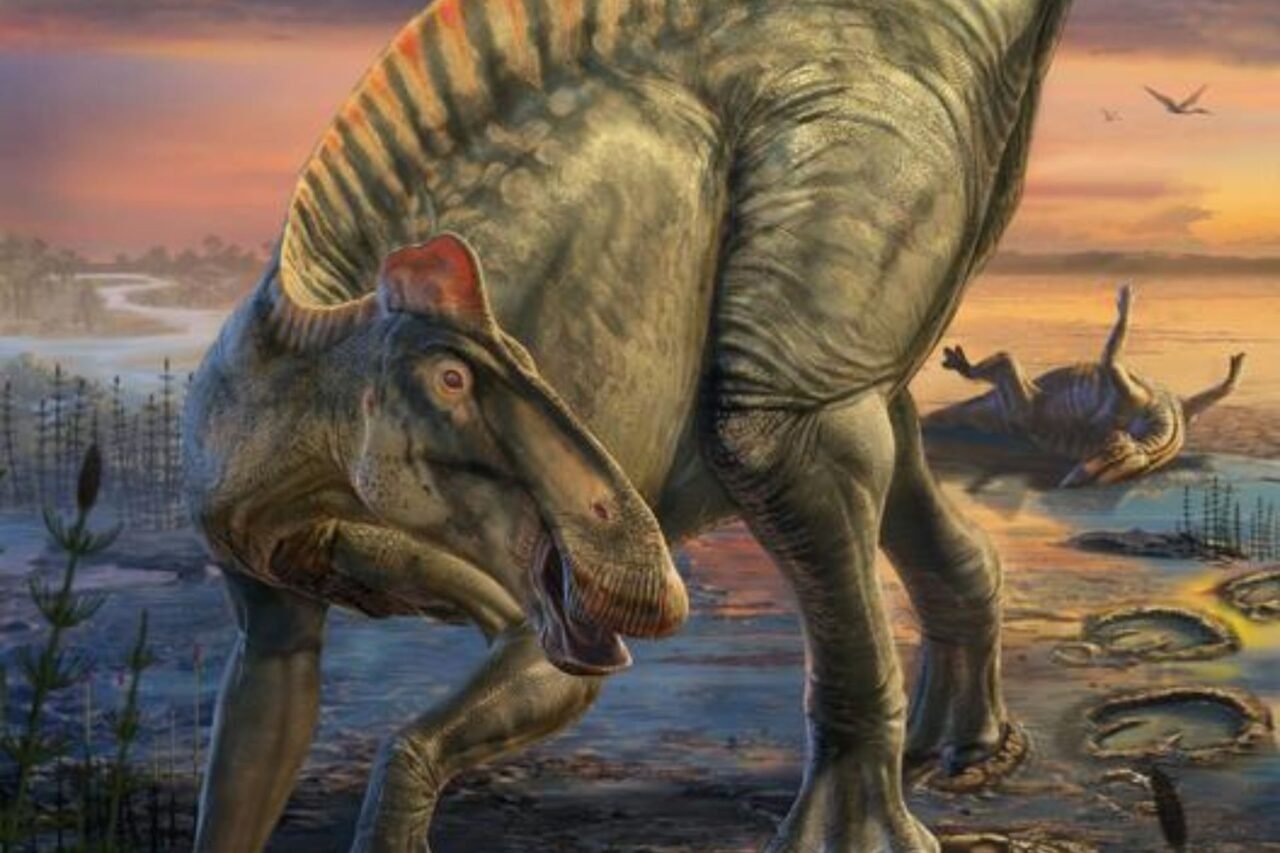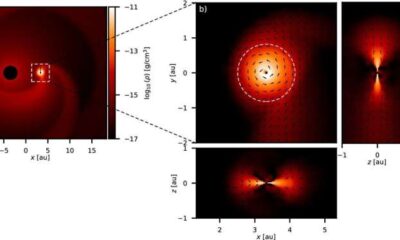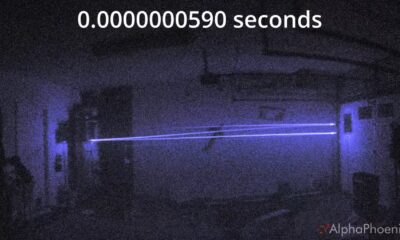Science
Scientists Uncover Stunning Details of Edmontosaurus Mummies

In a remarkable discovery, scientists have unveiled striking details about the appearance of the long-extinct dinosaur species, Edmontosaurus annectens. Found in Wyoming’s “mummy zone,” these well-preserved fossils provide unprecedented insights into the physical features of this large duck-billed dinosaur, which lived approximately 66 million years ago. A study published on March 15, 2024, in the journal Science highlights the significance of these findings, showcasing how the preservation process has allowed researchers to reconstruct the creature’s living appearance with newfound clarity.
The “mummy zone” is a distinct area within the Lance Formation, a geological site known for yielding exceptionally well-preserved dinosaur specimens. The area has been a focus of research for over a century, but in the early 2000s, a dedicated team led by Paul Sereno, a professor at the University of Chicago, unearthed two specimens of E. annectens. These fossils—a late juvenile and an early adult—were notable for their remarkable conservation, with large areas of their skin, spikes, and hooves still intact.
Unraveling the Preservation Mystery
Unlike human mummies, which are preserved through embalming techniques, the skin and other features of these dinosaurs were encased in a delicate clay film. This unique preservation method, referred to as clay templating, occurred shortly after the dinosaurs’ death. A sudden flash flood buried the carcasses in sediment, while bacteria coated the decaying remains, attracting clay particles from the surrounding area. The result was a thin layer, no thicker than 0.01 inches (or 0.02 centimeters), that created a three-dimensional cast of their original surfaces.
Sereno explained that the clay film acted as a “mask” for the dinosaurs, allowing for the preservation of details that would otherwise have been lost to time. As the organic materials decayed over millions of years, the skeletons fossilized beneath this clay layer, providing a rare glimpse into their physical characteristics.
Reconstructing the Dinosaur’s Appearance
The insights gained from these mummies have allowed researchers to paint a vivid picture of the E. annectens. The team determined that the dinosaur featured a fleshy crest along its neck and back, which transitioned into a row of tail spikes. The skin was primarily covered in small, pebble-like scales, offering a glimpse into the texture of its exterior. Notably, the adult specimen displayed wedge-shaped hooves on its hind feet, marking several significant firsts in vertebrate history.
“This discovery includes the earliest hooves documented in a land vertebrate, the first confirmed hooved reptile, and the first hooved four-legged animal with different forelimb and hindlimb posture,” Sereno noted. These characteristics were visualized by digital artists, who recreated how the duckbilled dinosaur might have appeared while traversing soft mud at the end of the Cretaceous Period.
As researchers continue exploring the mummy zone, the potential for further discoveries remains vast. Each excavation may yield additional insights into the past, enriching our understanding of these ancient creatures and the ecosystems they inhabited. The findings from this research not only deepen scientific knowledge but also ignite curiosity about the natural history of dinosaurs, revealing the intricate details of life on Earth millions of years ago.
-

 Science2 months ago
Science2 months agoOhio State Study Uncovers Brain Connectivity and Function Links
-

 Politics2 months ago
Politics2 months agoHamas Chief Stresses Disarmament Tied to Occupation’s End
-

 Science1 month ago
Science1 month agoUniversity of Hawaiʻi Joins $25.6M AI Project for Disaster Monitoring
-

 Science4 weeks ago
Science4 weeks agoALMA Discovers Companion Orbiting Giant Star π 1 Gruis
-

 Entertainment2 months ago
Entertainment2 months agoMegan Thee Stallion Exposes Alleged Online Attack by Bots
-

 Science2 months ago
Science2 months agoResearchers Challenge 200-Year-Old Physics Principle with Atomic Engines
-

 Entertainment2 months ago
Entertainment2 months agoPaloma Elsesser Shines at LA Event with Iconic Slicked-Back Bun
-

 World1 month ago
World1 month agoFDA Unveils Plan to Cut Drug Prices and Boost Biosimilars
-

 Business2 months ago
Business2 months agoMotley Fool Wealth Management Reduces Medtronic Holdings by 14.7%
-

 Science2 months ago
Science2 months agoInnovator Captures Light at 2 Billion Frames Per Second
-

 Top Stories2 months ago
Top Stories2 months agoFederal Agents Detain Driver in Addison; Protests Erupt Immediately
-

 Entertainment1 month ago
Entertainment1 month agoBeloved Artist and Community Leader Gloria Rosencrants Passes Away









